Y6 Writing a Quest Myth – collaboratively
£3.00
KS2 National Curriculum:
✓ Co-planning a full myth with clear narrative structure
✓ Including setting, characters, problem, resolution, and magical items
✓ Using a story mountain and boxed-up planning grid
✓ Reflecting on group writing choices and refining structure
Activities in this lesson include reminders about the features of a quest myth, looking at how to structure a quest myth in detail, a step-by-step guide to writing a quest myth including completing a story mountain and writing a myth with a partner.
There is a five-minute evidence-based CPD activity at the end of this lesson which will develop classroom teachers’ skill set. This CPD consists of a research extract on peer assessment with a five-minute activity based on this extract.
Description
Recommended Year Group: Year 6
Focus: Paired writing of a structured quest narrative
Skills Developed:
• Co-planning a full myth with clear narrative structure
• Including setting, characters, problem, resolution, and magical items
• Using a story mountain and boxed-up planning grid
• Reflecting on group writing choices and refining structure
• Writing – Composition: Create and structure extended narrative writing
• Spoken Language: Collaborate effectively and reflect on contributions
• Thinking and Learning: Paired planning, shared reflection, peer review
These evidence-based learning (EBL) lessons are based on classroom practice that has been proven, by research, to maximise thinking, learning and attainment. From an extensive review of educational research, we identified the eight key classroom thinking and learning skills that were common across these research papers. We named these eight key skills “EBL skills”.
EBL skills have been proven by research to maximise learning because they combine the most productive thinking skills with the most effective learning behaviours. Each of our evidence-based learning lessons uses the English curriculum as a framework through which the eight EBL skills are delivered.
Teachers also have the opportunity to add to their own skill set or refresh their existing skills with our five-minute CPD activity, based on one of the EBL skills used in this lesson.
The skills in bold below are the EBL skills developed in this Myths lesson. Click on each skill to learn more about that skill.
- Collaboration
- Thinking Skills
- Peer Assessment
- Peer Teaching
- Self-Assessment
- Metacognition
- Self-Regulation
- Independent Learning
1 review for Y6 Writing a Quest Myth – collaboratively
Only logged in customers who have purchased this product may leave a review.
Related products
-


Y6 The Boy Who Cried Wolf
£3.00 Add to basket £3.00Add to basket
£3.00Add to basketKS2 National Curriculum:
✓ Identifying cause-effect structure within the fable
✓ Retelling the story in a modern context
✓ Creating dialogue and events that align with the moral
✓ Discussing consequences and trustActivities in this lesson include a quick summary of the key features of fables, reading the full text of The Boy Who Cried Wolf, answering higher and lower order questions based on this fable and writing a modern version of this fable.
There is a five-minute evidence-based CPD activity at the end of this lesson which will develop classroom teachers’ skill set. This CPD consists of a research extract on peer assessment with a five-minute activity based on this extract.
VIEW -


Y5 Robots Got Talent
£3.00 Add to basket £3.00Add to basket
£3.00Add to basketKS2 National Curriculum:
✓ Identifying structure and themes; participating in discussions and presentations.
Activities in this lesson include learning about common themes for science fiction stories, the structure of a science fiction story, the main features of science fiction stories, how to design a poster and creating a poster showing the key features of science fiction stories.
There is a five-minute evidence-based CPD activity at the end of this lesson which will develop classroom teachers’ skill set. This CPD consists of a research extract on peer assessment with a five-minute activity based on this extract.
VIEW -

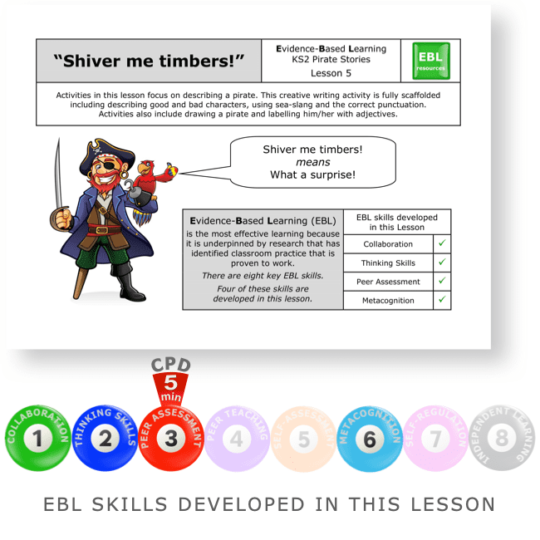
Shiver Me Timbers
£3.00 Add to basket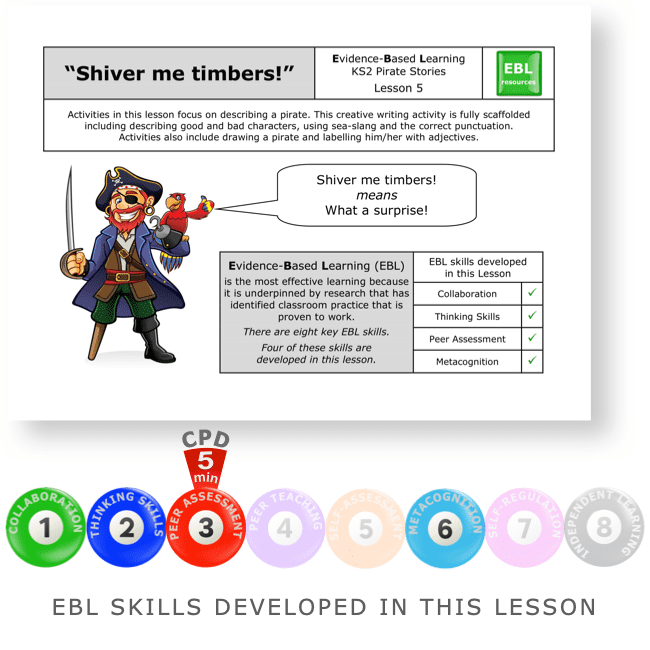 £3.00Add to basket
£3.00Add to basketActivities in this lesson focus on describing a pirate. This creative writing activity is fully scaffolded including describing good and bad characters, using sea-slang and the correct punctuation. Activities also include drawing a pirate and labelling him/her with adjectives.
There is a five-minute evidence-based CPD activity at the end of this lesson which will develop classroom teachers’ skill set. This CPD consists of a research extract on peer assessment with a five-minute activity based on this extract.
VIEW -
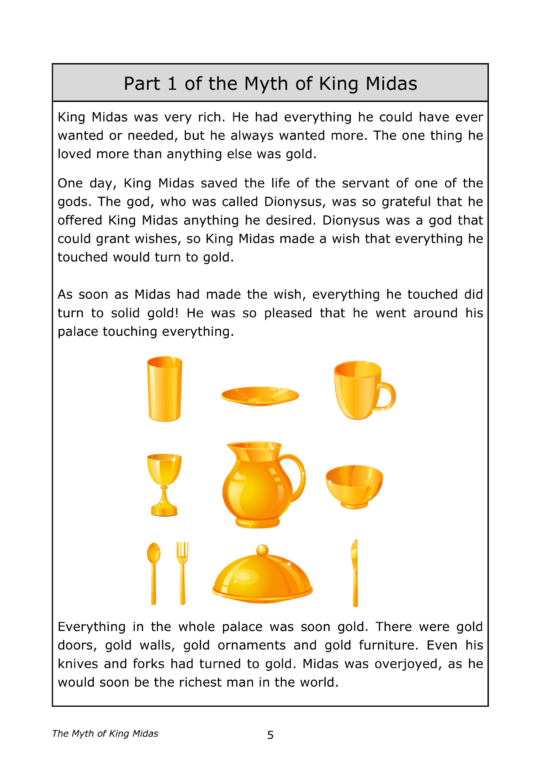
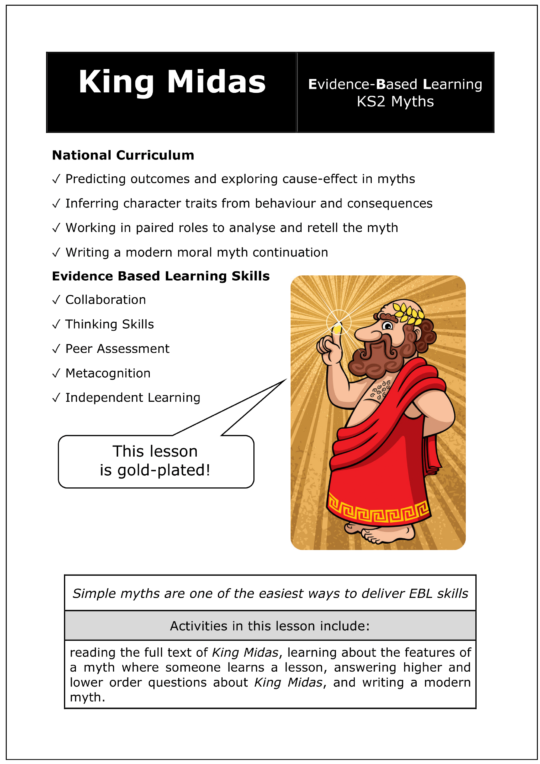
Y5 King Midas
£3.00 Add to basket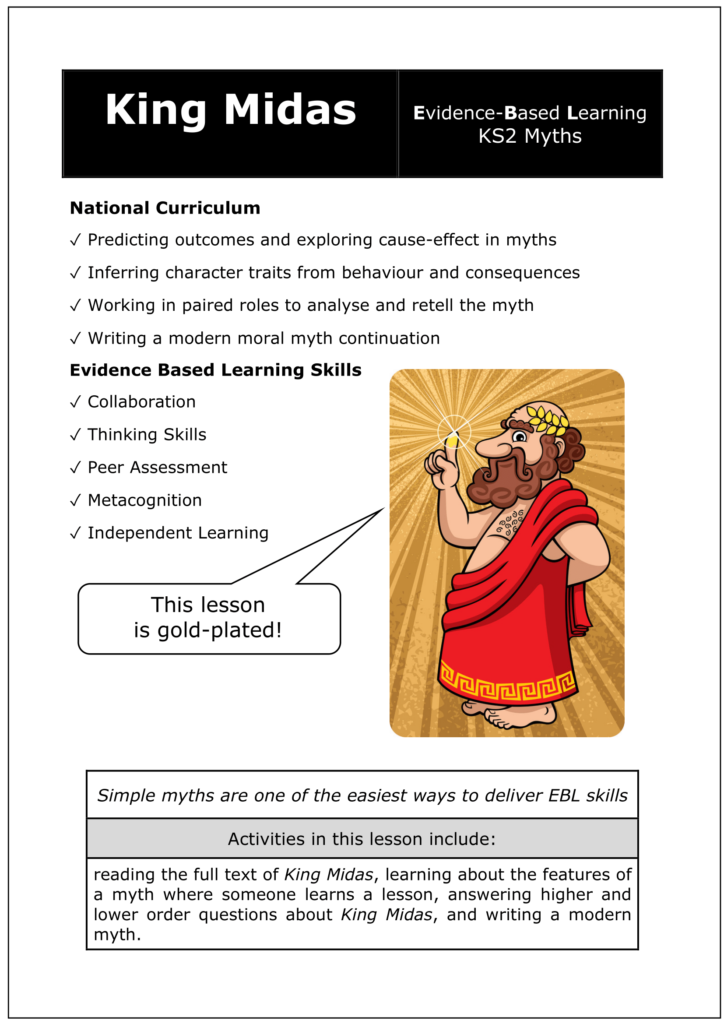 £3.00Add to basket
£3.00Add to basketKS2 National Curriculum:
✓ Predicting outcomes and exploring cause-effect in myths
✓ Inferring character traits from behaviour and consequences
✓ Working in paired roles to analyse and retell the myth
✓ Writing a modern moral myth continuationActivities in this lesson include reading the full text of King Midas, learning about the features of a myth where someone learns a lesson, answering higher and lower order questions about King Midas, writing a tweet and writing a modern myth.
There is a five-minute evidence-based CPD activity at the end of this lesson which will develop classroom teachers’ skill set. This CPD consists of a research extract on peer assessment with a five-minute activity based on this extract.
VIEW



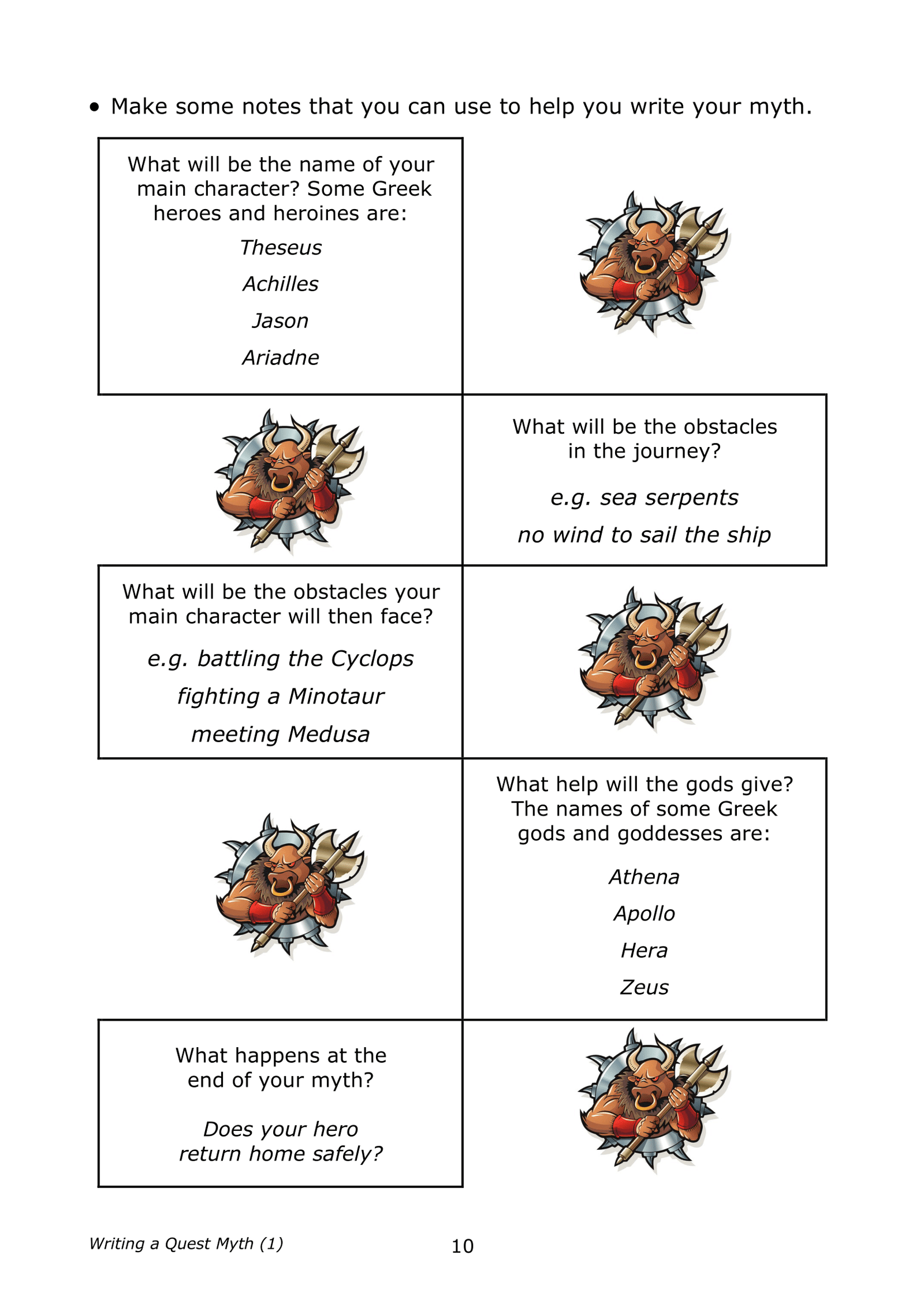
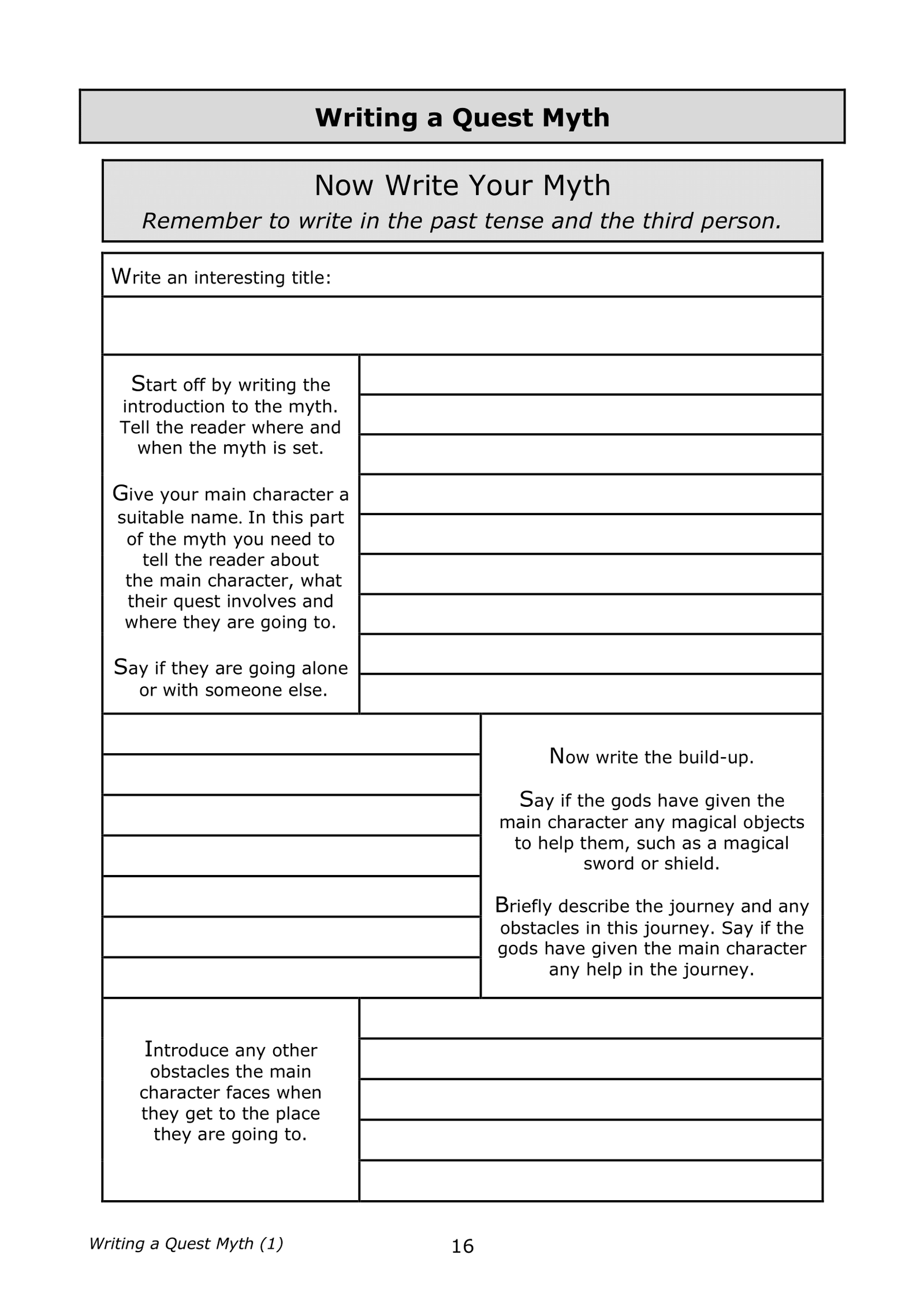
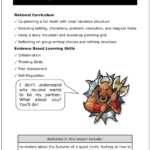
Philipem (verified owner) –
We asked a.i. to review this lesson. This is what it said:
Teaching English and Evidence-Based Learning Skills with Myths
Teachers, I’ve discovered a great resource called “Writing a Quest Myth – collaboratively” that can help students write their own myths while developing key learning abilities. It’s part of a wider series of myth lessons designed to boost thinking skills based on educational research.
In particular, this quest myth writing lesson includes collaboration, peer assessment, self-regulation, and thinking skills activities. For example, students are first reminded exactly what the features of a quest myth involve. They then co-write one with a peer, using a story mountain and table to structure their tale about heroes and magical creatures.
Groups next swap myths and give feedback to each other on what they did well and what could be improved. There are also questions focused on students reflecting on their own learning. And the lesson finishes up with a 5-minute CPD extract for us teachers centred around the learning benefits of peer assessment.
Getting students assessing one another’s work is effective for mutual development. The full lesson allows students to be really creative in writing quest myths too – great for boosting literacy and writing skills.
With its focus on collaboratively writing, structured peer review, and teacher CPD on assessment, I’d give this comprehensive quest myth writing lesson ⭐⭐⭐⭐⭐. It blends English and key learning skills seamlessly.